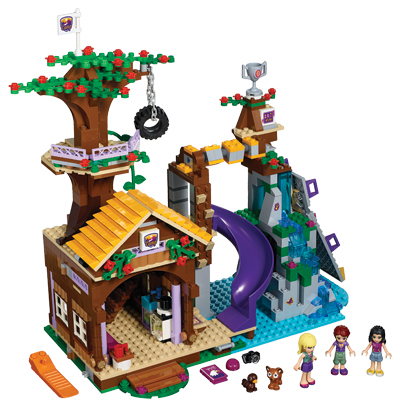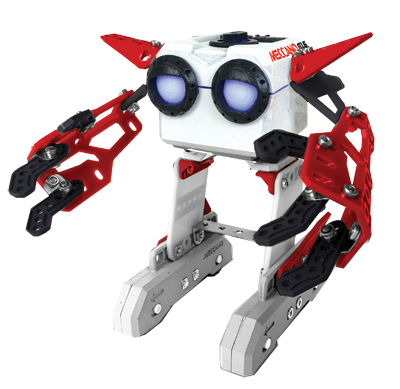by Sean McGowan, founder, SMG Leisure
The construction category accounted for about 10.5 percent of total U.S. toy industry retail sales in 2015, according to The NPD Group. The category rose 9 percent in 2015, on top of a rise of 11 percent in 2014. Over the past 15 years or so, construction toys have been the most consistent growth segment of the U.S. toy industry. Growth has been so strong and so consistent that if you were to exclude construction toys from total industry sales, there would have been essentially no growth in U.S. toy industry sales from 2003 through 2014 (prior to the massive surge in action figure sales last year), especially excluding the effects of inflation. It is the only one of the NPD toy industry super categories not to show at least one year-on-year annual decline during this period.
It is notable that not only does the category not owe its strong and steady growth during this period to the increased use of technology (electronics, Wi-Fi connections, apps, etc.), but also that the growth is actually in spite of an explosion in consumer interest in video games and smart gadgets. The category’s best years actually came after the introduction of the iPhone. (A side corollary here is that the biggest gains in Lego’s profitability came at a time when its main raw material—plastic resins—were undergoing a dramatic increase in costs, although recent years have offered some relief. Lego may be the most “plastic” of all toys, and yet wild gyrations in the cost of the feedstock did nothing to disrupt its growth, even as other toy makers were blaming rising resin costs for their own dips in profitability.)

Lego’s category market share, which we estimate at greater than 80 percent, suggests that Lego did not simply ride the strength of the category—it created it. In my view, the company’s success has been based on several key components operating both separately and together. First, it changed its corporate culture (with astonishing speed, given its size, age, and prior success) to become more attentive to feedback from both retailers and consumers. Second, it stepped up its already impressive research and development efforts, developing a team of designers with an uncanny ability to discern what consumers worldwide would be interested in seeing in the way of new themes. Third, it expanded its licensing efforts to incorporate a broad range of topical as well as timeless licenses. However, it is crucial to note that Lego’s growth over the past decade has not simply been the result of a significant increase in licensed toys. This is not all about Marvel and Star Wars. The company’s City line sets have seen growth that keeps pace with licensed categories. Fourth, it introduced Lego Friends, by far its most successful effort to attract girls to the play pattern that for so many years was considered one for boys.
And, in a sense, it is this success that leads to what I consider the fifth reason for Lego’s striking and consistent growth: It effectively expanded the construction category to incorporate elements of play that had previously been associated with other, non-construction toys. The rising popularity of its movie-licensed play sets and figures effectively put Lego in the action figure category, since kids would be playing with the Lego figures and play sets in much the same way that they might play with other licensed action figures. The Friends line tapped into young girls’ desire for dollhouse play, for collectibles, and for mini-dolls. Original themed sets, such as Ninjago and Chima, feature extensive vehicle play. The company even branched out into “board games” (although with less success than some of its other efforts). The Dimensions and Fusion lines are strong entrants in the toys-to-life and smart toy categories. In other words, much of Lego’s growth came as a result of taking the brand into new toy categories. In doing so, it effectively grew the construction toy category by taking over some of the play patterns previously held by non-construction toys.

Looking at the category more broadly than just its bigger player, what is interesting lately is that Lego is not the only construction toy maker that is seeing growth. For most of the years between 2005 and 2015, Lego essentially got more than 100 percent of the category’s growth, while many of its construction toy rivals were seeing declines in sales. More recently, these other brands have seen growth.
• Since its acquisition by Mattel, Mega Bloks sales have stabilized and resumed growth (following a period of forced contraction after the acquisition).
• The Bridge Direct has picked up some share with its C3 line of construction sets (featuring licenses from the NBA, WWE, and Shopkins).
• K’nex may be a fraction of its peak size, but it has resumed rapid growth, benefitting from a shift back to domestic manufacturing, use of key licenses, and expansion of the brand into other play patterns. In other words, following a similar playbook as Lego.
• Meccano, acquired by Spin Master in 2013, has enjoyed a strong surge in shelf space, sales, and innovation.
It is worth noting again that with the exception of some of the Lego and Meccano lines, none of these toys are tech toys. Indeed, I believe a big part of their appeal is that they are not screen-based; they appeal to parents’ nostalgia for their own toys and their desire to keep their kids from staring at screens all day. In this sense, perhaps the future of construction toys has never been brighter.
I’ve learned you can never say never—and that you can never say always—in the toy industry, but it certainly feels like this is a category with a promising future. Construction toys offer boundless hours of open ended-play (even if they are based on licensed themes), a play pattern that is inherently good for a developing young mind, an option that millennial parents see as part of the highly coveted STEM movement, and incredible durability. (My parents’ basement was flooded during Hurricane Sandy, and the only toys that survived were Lego bricks.) I believe Lego is likely to continue to be the dominant player in this category, but the fact that it is no longer the only player that is doing well is a very good sign for the whole segment. »
 Sean McGowan is the founder of SMG Leisure. He has been closely following the toy industry for 30 years, analyzing product trends, cost changes, marketing practices, and other aspects of how products and companies succeed (or don’t). He also follows digital gaming, sporting goods, and juvenile products. McGowan started SMG Leisure in January 2016 to continue this work beyond the parameters of Wall Street.
Sean McGowan is the founder of SMG Leisure. He has been closely following the toy industry for 30 years, analyzing product trends, cost changes, marketing practices, and other aspects of how products and companies succeed (or don’t). He also follows digital gaming, sporting goods, and juvenile products. McGowan started SMG Leisure in January 2016 to continue this work beyond the parameters of Wall Street.

